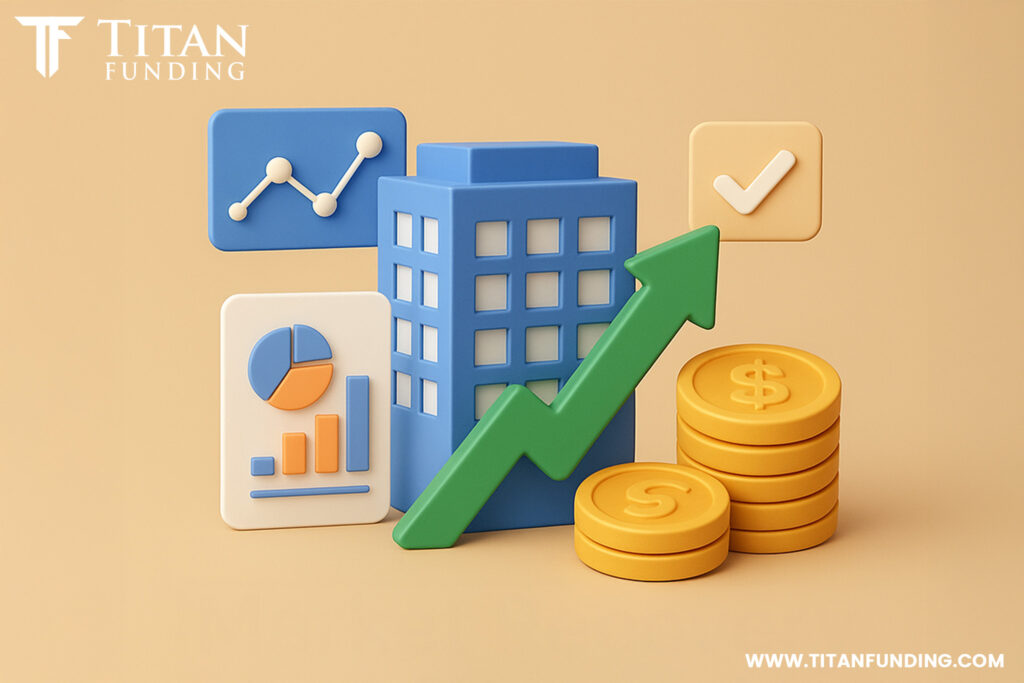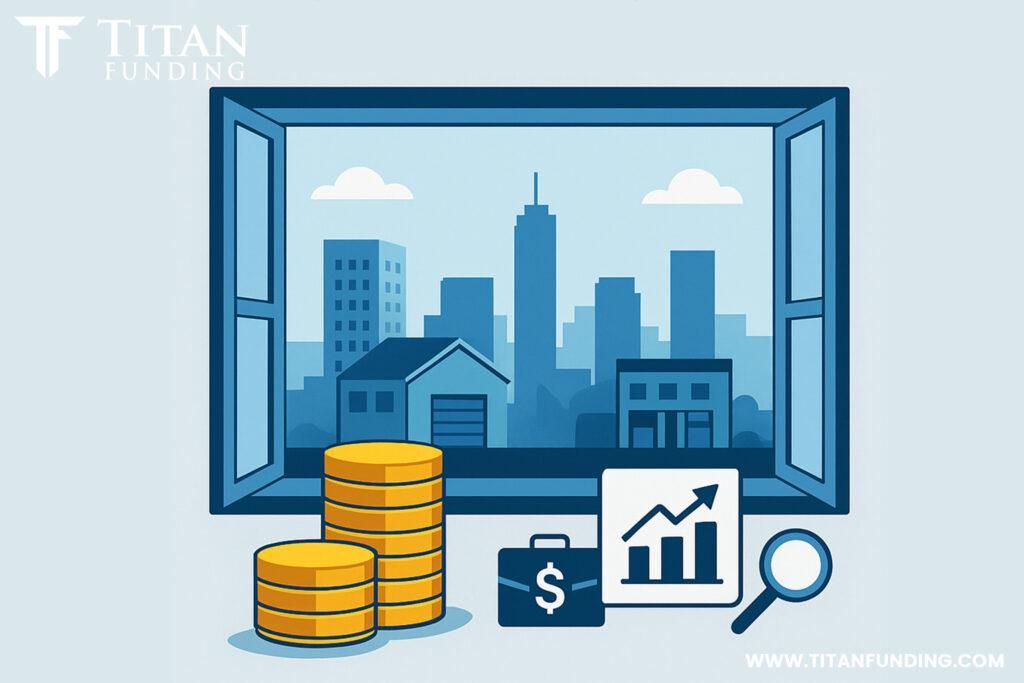
An in-depth analysis of market recovery indicators, sector performance, and strategic opportunities for institutional investors in the evolving commercial real estate landscape
The commercial real estate market has reached a pivotal inflection point in the second half of 2025, with multiple indicators converging to signal the emergence of a sustained recovery that presents compelling opportunities for institutional investors, family offices, and high-net-worth individuals. After navigating through a challenging period of interest rate volatility, valuation uncertainty, and shifting demand patterns, the market is demonstrating clear signs of stabilization that are creating attractive entry points for sophisticated capital deployment strategies.
According to CoStar’s latest analysis, commercial property executives are declaring that recovery has arrived, with Adam Showalter, a managing director at the firm, stating that “all signs point to this recovery extending through the end of 2025 and gaining further traction into 2026.” This optimistic outlook is supported by concrete market indicators, including a surge in leasing activity that has prompted major firms to raise their 2025 forecasts, signaling renewed confidence in the commercial real estate market’s fundamental strength and long-term prospects.
The convergence of multiple positive factors has created what many industry experts consider to be an optimal investment window for commercial hard money lenders, private money lenders, and investors seeking exposure to commercial hard money loans, ground up construction loans, and mortgage note investing opportunities. The combination of improved market sentiment, increased transaction activity, and the deployment of billions in dry powder that has been waiting on the sidelines suggests that the second half of 2025 represents a strategic moment for capital allocation in commercial real estate.
J.P. Morgan’s midyear commercial real estate outlook reveals that multifamily, retail, and industrial sectors remain resilient despite ongoing economic uncertainty, while alternative sectors such as data centers and healthcare are experiencing particularly strong investor interest. This sector diversification provides multiple avenues for investment strategies that can capitalize on different aspects of the recovery while managing risk through geographic and property type diversification.
The market’s evolution reflects broader economic trends that have created both challenges and opportunities for commercial real estate investors. Rising construction costs, hybrid work patterns, and evolving tenant preferences have forced property owners and investors to adapt their strategies, leading to innovative approaches such as adaptive reuse projects and right-sizing initiatives that are creating new value creation opportunities for forward-thinking investors.
Market Recovery Fundamentals
The foundation of the commercial real estate recovery in 2025 rests on several interrelated fundamentals that collectively point toward stabilization and renewed growth.
One of the most significant drivers has been the Federal Reserve’s shift in monetary policy. After a prolonged period of restrictive interest rates aimed at curbing inflation, the Fed’s measured reductions throughout the first half of 2025 have lowered borrowing costs, improving the affordability of both debt financing and refinancing for commercial property owners. This policy adjustment has relieved pressure on balance sheets while simultaneously unlocking new transaction activity across multiple sectors.
Another critical factor has been the stabilization of property valuations, which had been under pressure due to rising cap rates and reduced transaction volume in prior years. As interest rates have moderated, valuation metrics have begun to stabilize, creating greater alignment between buyers and sellers. This alignment has contributed to increased transaction activity and enhanced liquidity in the marketplace, signaling a return to more normal market functioning.
Leasing fundamentals have also improved across several property sectors, particularly in multifamily and industrial, where demand continues to outpace supply in many markets. According to J.P. Morgan’s 2025 outlook, multifamily absorption is accelerating as household formation rebounds, while industrial properties remain in high demand due to continued e-commerce growth and supply chain reconfiguration. Retail, once considered a lagging sector, has shown surprising resilience as experiential concepts and necessity-based formats attract both tenants and investors.
The infusion of capital from institutional investors, private equity firms, and alternative lenders has further supported market recovery. Billions in dry powder that had been sidelined during the height of uncertainty are now being strategically deployed, particularly into distressed and value-add opportunities where investors can capture attractive risk-adjusted returns. This influx of capital is providing critical liquidity while helping to stabilize pricing and support continued market momentum.
These fundamentals collectively create a market environment that, while not without risks, offers compelling opportunities for investors who can navigate sector-specific dynamics and capitalize on emerging recovery trends.
Sector Performance and Opportunities
Multifamily
The multifamily sector continues to demonstrate resilience, with strong leasing activity and rent growth in many markets. Household formation is rebounding after several years of suppressed activity, driven by demographic trends and improving economic conditions. While rent growth has moderated from the extraordinary levels of the pandemic years, it remains healthy and sustainable in most metropolitan areas. Institutional investors continue to favor multifamily as a defensive asset class with stable cash flows and long-term demand fundamentals.
Industrial
Industrial real estate remains one of the strongest-performing sectors, supported by ongoing e-commerce expansion, supply chain reconfiguration, and increased demand for last-mile distribution facilities. Vacancy rates remain at historic lows in many logistics hubs, and rental growth continues to outpace inflation. Investors are particularly focused on modern, well-located facilities that can accommodate advanced automation and sustainability requirements from tenants.
Retail
After years of structural headwinds, the retail sector has demonstrated surprising resilience, particularly in necessity-based and experiential formats. Grocery-anchored centers, fitness concepts, and entertainment-oriented developments are attracting strong leasing demand. Investors are beginning to reenter the sector selectively, focusing on high-traffic locations with strong tenant rosters and defensive characteristics.
Office
The office sector remains challenged by hybrid work patterns and shifting tenant preferences, but green shoots of stabilization are emerging. Class A properties in prime locations continue to attract demand, particularly those that offer modern amenities, sustainability certifications, and flexible workspaces. Adaptive reuse projects, including office-to-residential conversions, are gaining traction as investors seek creative solutions to reposition underutilized assets.
Alternative Sectors
Alternative property sectors, including data centers, healthcare facilities, life sciences, and student housing, are experiencing strong investor interest and robust fundamentals. Data centers, in particular, are benefiting from surging demand for cloud services and artificial intelligence infrastructure, creating a powerful growth story within the broader commercial real estate landscape. Healthcare and life sciences properties offer defensive characteristics tied to demographic trends, while student housing continues to attract capital due to enrollment growth and undersupply in many markets.
Strategic Opportunities for Investors
The stabilization of commercial real estate in 2025 presents a variety of strategic opportunities for investors who can align capital with emerging trends and sector dynamics.
1. Distressed and Value-Add Investments
One of the most compelling opportunities lies in distressed and value-add assets, where market dislocation has created pricing inefficiencies. Investors with the ability to execute redevelopment, repositioning, or operational improvements can capture outsized returns while contributing to broader market recovery. Ground up construction loans and bridge financing are particularly well positioned to support these strategies, as borrowers seek flexible capital solutions.
2. Sector Diversification
Investors are increasingly recognizing the benefits of diversifying across multiple property sectors to balance risk and capture different aspects of recovery. Allocations to resilient sectors such as multifamily and industrial can be complemented with selective exposure to retail and office repositioning, as well as growth-oriented alternative sectors like data centers and healthcare.
3. Geographic Targeting
Regional performance disparities present opportunities for geographically targeted strategies. Markets with strong population growth, favorable business climates, and diversified economies—such as the Sun Belt and Mountain West—continue to attract investor interest. At the same time, gateway markets are showing signs of renewed stability, particularly in sectors such as multifamily and Class A office.
4. Partnership with Alternative Lenders
As traditional banks remain constrained by regulatory requirements, private money lenders and commercial hard money lenders are stepping in to fill financing gaps. Investors can benefit from partnerships with these lenders by gaining exposure to high-yield lending opportunities in commercial hard money loans and mortgage note investing. These partnerships provide both attractive returns and diversification benefits relative to traditional equity investments.
5. ESG and Impact Investing
Environmental, social, and governance (ESG) considerations are becoming increasingly important in investment decision-making. Opportunities exist to create value through energy-efficient retrofits, sustainable development practices, and community-oriented projects. These strategies not only enhance long-term asset performance but also align with growing investor demand for responsible and impactful investments.
Risk Considerations and Challenges
While the second half of 2025 presents attractive opportunities, investors must also carefully evaluate the risks and challenges that remain in the commercial real estate landscape.
1. Interest Rate Volatility
Although the Federal Reserve has begun to lower rates, uncertainty remains around the pace and magnitude of future adjustments. Unexpected shifts in monetary policy could impact financing costs, cap rates, and investor sentiment, creating potential volatility in valuations and transaction activity.
2. Economic Uncertainty
Broader economic conditions, including employment trends, consumer spending, and global trade dynamics, will continue to influence commercial real estate performance. A slowdown in economic growth or unexpected shocks could dampen leasing demand and investment activity, particularly in more cyclical sectors.
3. Sector-Specific Challenges
Certain property sectors, particularly office, continue to face structural challenges that may take years to fully resolve. Hybrid work adoption, tenant downsizing, and evolving workplace expectations create ongoing uncertainty around long-term office demand and valuations. Retail also faces risks tied to consumer behavior shifts and e-commerce competition, despite recent resilience.
4. Construction Costs and Supply Constraints
Rising construction costs and supply chain disruptions remain challenges for developers and investors pursuing ground up construction loans and redevelopment projects. These factors can impact project feasibility and timelines, requiring careful planning and contingency strategies.
5. Regulatory and Policy Risks
Regulatory changes at both the federal and local levels can impact commercial real estate markets. Zoning reforms, tax policy adjustments, and evolving ESG requirements all represent potential sources of risk that must be monitored and incorporated into investment strategies.
6. Liquidity and Exit Strategies
While transaction activity is improving, liquidity remains uneven across sectors and markets. Investors must carefully consider exit strategies, particularly for value-add and development projects, to ensure that capital can be recycled effectively when market conditions shift.

Outlook for the Remainder of 2025 and Beyond
The commercial real estate market has entered a new phase of stabilization and recovery that is likely to gain momentum through the end of 2025 and into 2026. While risks remain, the combination of improved monetary policy, stabilizing valuations, resilient sector fundamentals, and renewed investor confidence suggests that the worst of the downturn is behind the industry.
Institutional investors, private money lenders, and commercial hard money lenders are uniquely positioned to capitalize on this environment by deploying capital into opportunities that balance risk and reward. Whether through direct equity investments, commercial hard money loans, ground up construction loans, or mortgage note investing, multiple strategies exist to generate attractive returns while supporting the continued recovery of the commercial real estate market.
The remainder of 2025 represents a particularly compelling investment window, with billions in dry powder being deployed, transaction activity increasing, and sector performance diverging in ways that create targeted opportunities. Investors who can navigate market complexities, align with sector-specific trends, and leverage partnerships with alternative lenders will be well positioned to capture the upside of the recovery cycle.
Looking further ahead, the evolution of tenant preferences, sustainability requirements, and technological integration will continue to reshape the commercial real estate landscape. Adaptive reuse, ESG-focused initiatives, and innovation in property management will become increasingly important themes as investors seek to create long-term value in a rapidly changing environment.
Ultimately, the second half of 2025 marks a turning point for commercial real estate. The combination of stabilization, opportunity, and innovation creates a fertile environment for strategic capital deployment that can drive both attractive financial outcomes and lasting positive impacts on communities and the built environment.
